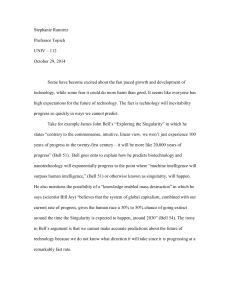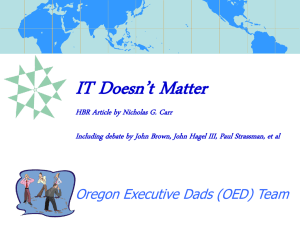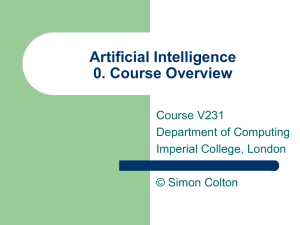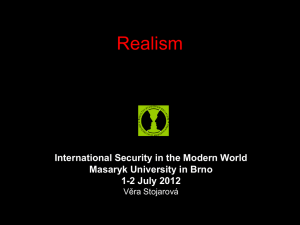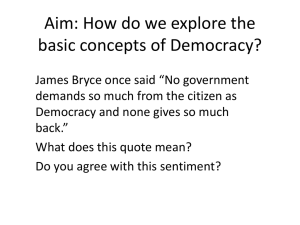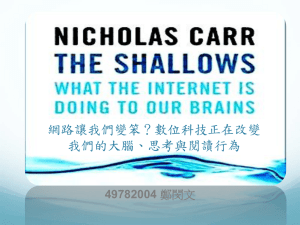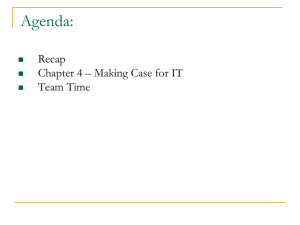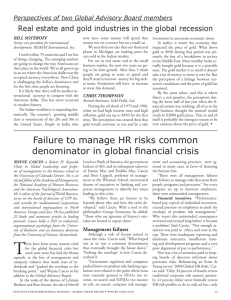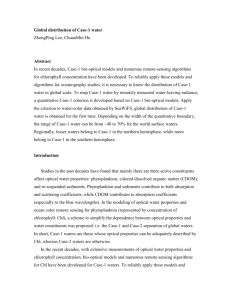Midterm - WordPress.com
advertisement
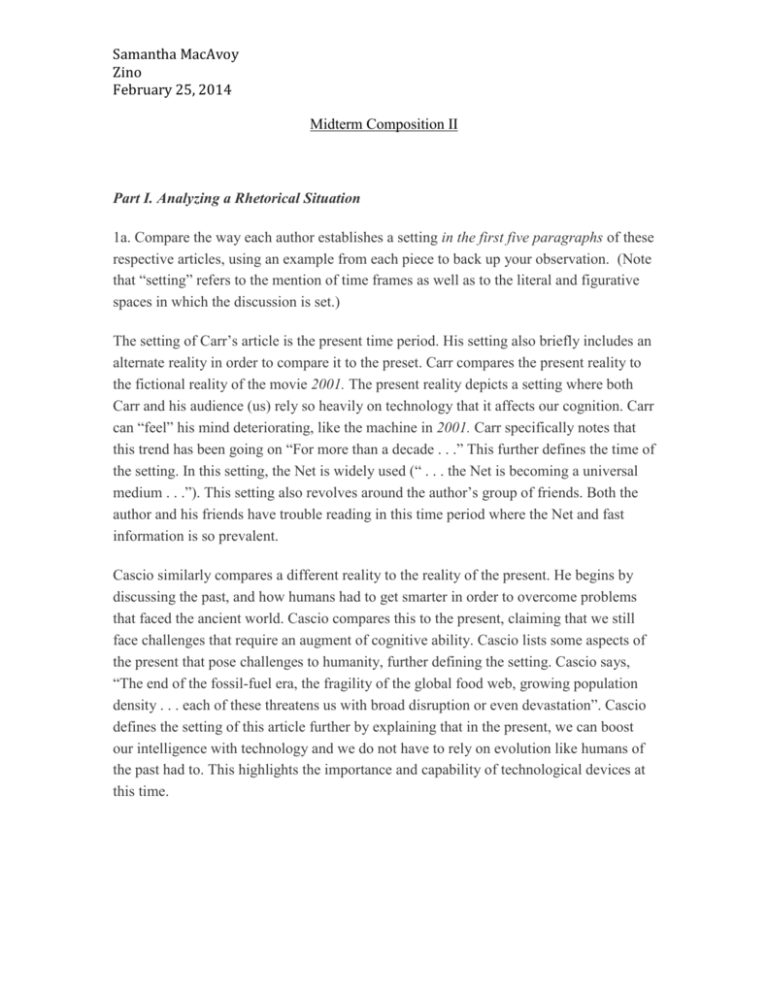
Samantha MacAvoy Zino February 25, 2014 Midterm Composition II Part I. Analyzing a Rhetorical Situation 1a. Compare the way each author establishes a setting in the first five paragraphs of these respective articles, using an example from each piece to back up your observation. (Note that “setting” refers to the mention of time frames as well as to the literal and figurative spaces in which the discussion is set.) The setting of Carr’s article is the present time period. His setting also briefly includes an alternate reality in order to compare it to the preset. Carr compares the present reality to the fictional reality of the movie 2001. The present reality depicts a setting where both Carr and his audience (us) rely so heavily on technology that it affects our cognition. Carr can “feel” his mind deteriorating, like the machine in 2001. Carr specifically notes that this trend has been going on “For more than a decade . . .” This further defines the time of the setting. In this setting, the Net is widely used (“ . . . the Net is becoming a universal medium . . .”). This setting also revolves around the author’s group of friends. Both the author and his friends have trouble reading in this time period where the Net and fast information is so prevalent. Cascio similarly compares a different reality to the reality of the present. He begins by discussing the past, and how humans had to get smarter in order to overcome problems that faced the ancient world. Cascio compares this to the present, claiming that we still face challenges that require an augment of cognitive ability. Cascio lists some aspects of the present that pose challenges to humanity, further defining the setting. Cascio says, “The end of the fossil-fuel era, the fragility of the global food web, growing population density . . . each of these threatens us with broad disruption or even devastation”. Cascio defines the setting of this article further by explaining that in the present, we can boost our intelligence with technology and we do not have to rely on evolution like humans of the past had to. This highlights the importance and capability of technological devices at this time. 1b. Describe how the way a setting is established early on in each article tells you something about the relationship between author and audience in each article. The setting in Carr’s article tells the reader something about the relationship between the author and the audience. He begins by explaining himself as an author and how this new era of technology has affected his ability to read. Then, he mentions that he is not alone in his view, and that others, including perhaps his audience, feel the same way. He says, “For me, as for others . . .” Furthermore, he begins his fifth paragraph by asserting, “I’m not the only one”. This suggests that the author wants to identify with his audience and reach out to those who may be affected by this era of technology as well. Cascio includes his audience in the article right away. He uses the plural first person pronoun immediately to show that he identifies with his audience. In the third paragraph, Cascio says, “How did we cope? By getting smarter”. His setting involves the age of technology, which affects everyone currently living, thus, the author and the audience are on the same level. 2. Cite a place where each author adopts the role of the naysayer himself or brings in an outside naysayer (i.e. opposing view). Then describe how this moment pushes each author to further define the terms and/or purpose of his argument. Carr plays the naysayer himself in his article. He plays the naysayer himself when he says, “Maybe I’m just a worrywart. Just as there’s a tendency to glorify technological progress, there’s a countertendency to expect the worst of every new tool or machine”. Carr sets up a counter argument to his own argument. He used outside examples to support his naysayer argument. For example, he shows how Socrates’s renouncement of writing was not fully merited because writing has had a profound affect on expanding human intelligence. Including this naysayer only made Carr’s argument stronger. He further defines the Net and its affects of the brain and how those are different affects than produced by other technological inventions such as writing. Carr explains that acts like reading a book open up spaces in our minds that allow us to expand our intelligence whereas the Net fills up these spaces with meaningless “content”. Cascio brings in an outside naysayer to oppose his argument: Carr’s article. He reiterates Carr’s point that technology damages our thought process. He restates Carr’s view that the more “content” out there is just more noise and is not beneficial to our cognitive ability. Cascio then uses Carr’s view and turns it around to further support his own argument. He says, “In reality, though, the proliferation of diverse voices may actually improve our overall ability to think”. He further supports this idea by defining the term “fluid intelligence”. It is “ . . . the ability to find meaning in confusion and to solve new problems, independent of acquired knowledge”. Clearly, Cascio used the naysayer to make his argument stronger. 3. Compare how each author approaches and defines the idea of “artificial intelligence.” How do their respective approaches to this idea reveal their purpose(s) for writing? Carr defines “artificial intelligence” negatively. He does not think humans should think like computers. Artificial intelligence thinks quickly and distractedly. Carr uses the example of Bruce Friedman to describe the negative affects of artificial intelligence on the human mind. Friedman claimed that his thinking “ . . . has taken on a ‘staccato’ quality, reflecting the way he quickly scans short passages of text from many sources online”. Friedman, like Carr, now has difficulty concentrating especially when it comes to reading. This negative view of artificial intelligence supports Carr’s purpose for writing. He hopes that we rely less on artificial intelligence because it affects deteriorates our mental abilities. Cascio, on the other hand, defines “artificial intelligence” positively. He praises it as something the human mind should try to achieve. Cascio claims, “ . . . the age of the cyborg and the super-genius has already arrived . . . we buttress our cognitive functions with our computing systems . . .” By defining artificial intelligence in a positive light, Cascio encourages us to use it to strength our human intelligence. This is his purpose of the article. Part II: Adopting the Role of the Naysayer Summarize the central metaphor offered to describe human intelligence (as it exists alongside technological tools) in each of these articles. Then, adopt the role of the naysayer, describing how the respective metaphors Cascio and Carr use are each limited or flawed in some way. Propose an alternate metaphor for describing human intelligence in the 21st century. Carr uses the metaphor of humans acting like computers to describe the affect of technology on human intelligence. He uses the example of Frederick Taylor’s invention of the perfect, efficient system for workers and how our brains now work on this calculated “algorithm” that requires little cognitive exercise. We rely too heavily on this system and do not think for ourselves. Carr’s metaphor is flawed because he adds a kind of a naysayer without refuting it. He says that although the factor under Taylor’s system was strict and perhaps inhumane, “the factory’s productivity soared”. This when applying Taylors “system” to the mind, one might argue that the mind’s productivity should skyrocket as well. Cascio uses a nearly opposite metaphor. Cascio claims that the complexity and range of media that the Net provide gives the mind a “cognitive calisthenics”. He claims that it works the mind in new, modern ways that only make us smarter. He claims that these mental exercises allow us to better make connections and see patterns. But not all exercise is good for you. Just because you’re sweating does not mean you’re working the right muscles. The ability to make connections and see patterns in a video game may be helpful in the real world, but what about the ability to calm the mind and be introspective? If the mind is over stimulated, it will constantly crave such stimulation and will loose the mental abilities such as contemplation, meditation, and reflection. Human intelligence in the 21st century is affected by technology. People have a harder time concentrating on long passages of reading. However, the ability to understand technology is a new form of intelligence. Thus, technology is more like homework for the mind. In school, tough exams or a lot of homework can exercise the mind in beneficial ways. They can cause the student to increase her knowledge, benefit her writing, and improve her reading. However, a lot of schoolwork can also cause destructive stress on the mind of the student. It can overwork her mind in ways that are damaging in the long run. It can cause long-term anxiety or even depression. So, we must approach technology as we approach our homework. We must give it important attention because it can help us in many ways. We must also remember to appreciate and focus on things beside homework (technology) in order to give our minds a break and de-stress to prevent any long-term damage.
